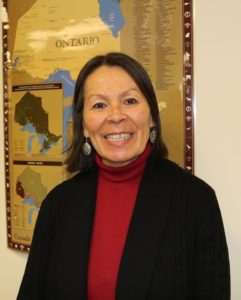‘We want to get this report out to make people aware of the issues’ says Cancer Care Ontario Director of Aboriginal Cancer Control

By Rick Garrick
TORONTO—Smoking, exposure to second-hand smoke, binge drinking, inadequate vegetable and fruit consumption, food insecurity and physical inactivity were highlighted as risk factors for Indigenous people in Cancer Care Ontario’s Prevention System Quality Index: Health Equity report.
“If you smoke, please stop because smoking is one of the leading causes of lung cancer and we have a high rate of lung cancer affecting our First Nations,” says Alethea Kewayosh, director of Aboriginal Cancer Control, Cancer Care Ontario. “And if you drink alcohol, please stop drinking alcohol. There are safe limits they say, but I believe that abstention is the better way to go.”
Kewayosh says Cancer Care Ontario recognizes that there is a role for traditional tobacco, which is not to inhale, but only puff on.
“The commercial tobacco you see in cigarettes, that is the major culprit we are really wanting to focus on,” Kewayosh says. “We don’t go out and say ‘don’t do that’, we go out and we have a conversation with our communities and provide them with the information they need to make informed choices. And many of them are. Our communities are getting very knowledgeable of the importance of not smoking, not drinking, eating healthy, being more active, but we’ve certainly got a lot more work to do.”
Kewayosh says it is important to eat as healthy a diet as possible.
“It’s about eating as healthy as we can,” Kewayosh says. “Despite what our budgets may be, there are still things we can do to eat healthier — not eating so much junk food, fast food, fried food.”
Kewayosh adds that getting as much exercise as possible is also important.
“Even if it’s just going for a 30-minute or an hour walk every day, and keeping our weight to a healthier level for our body type,” Kewayosh says. “We can’t always be model thin, but we can certainly be at a healthier weight for our body type.”
The report was released on April 4 and is available online. It states that First Nations, Inuit and Métis people are more likely than other Ontarians to smoke and binge drink; Métis and Inuit people are more likely to be exposed to second-hand smoke; First Nations people are more likely to have inadequate vegetable and fruit consumption; and on-reserve First Nations people are more likely to experience food insecurity and be physically inactive.
“The reason we want to get this report out is to make people aware of the issues,” Kewayosh says. “The audience is really a lot of the different ministries, the federal government, folks that can take a look at it and say, ‘you know what, we have a role here to help address some of these issues’.”
The report states that comprehensive strategies across multiple sectors and levels of government are needed to reduce cancer risk factors in Ontarians facing health inequities and in the population as a whole.
“Addressing health inequities for many groups in Ontario is key to strengthening our efforts to prevent cancer,” says Linda Rabeneck, vice-president of Prevention and Cancer Control, Cancer Care Ontario. The Prevention System Quality Index: Health Equity report identifies areas where more work is needed to develop and improve policies and programs that reduce cancer risk factors for all Ontarians, especially for people facing health inequities.”
Indigenous people were a major focus in the report as they have higher rates of some cancer risk factors, rising rates of new cancer cases and poorer cancer survival than other Ontarians.


